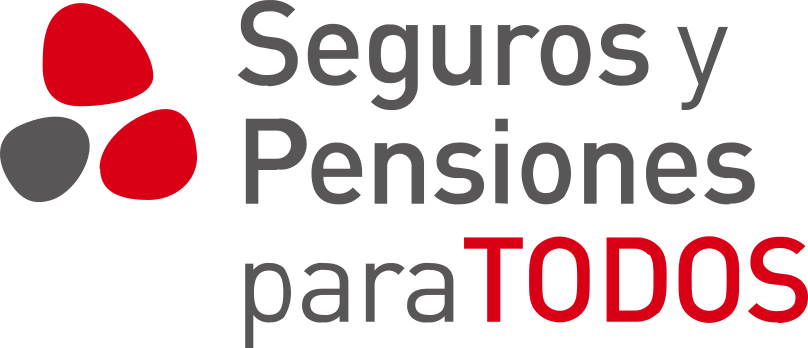Investment products according to your goals

Running a marathon, traveling around the world, doing a Master’s degree, getting 5,000 followers on Instagram, enabling the kids to study abroad… We all have goals in life and many of them have something in common, they involve money or need it to be achieved.
Just as you wouldn’t start a marathon with a sprint, or jog in a 100-meter race, there is an optimal strategy and set of investment products suited to each goal.
The investment horizon means that many of the tools are general, but there may still be differences. We find out how you can use investments to achieve your goals and which products you can utilize because: saving is not enough to secure your future, at least, not the future you are dreaming of.
Have a dream retirement
This is perhaps the most frequent goal, not least because it is the only one that everyone has in common. At some point in your life you are going to retire and when you do, you will want to make the most of that time in your own way.
The first thing you need to do on this journey is to have a clear idea of how much you need to have the retirement you want and, from there, work towards achieving your goal. The most important thing when selecting the investment products you are going to use is that they are focused on the long term and that they take advantage of tax deferral. In other words, you don’t have to constantly pay taxes on them.
That’s where options such as a portfolio of mutual funds, PIAS, pension plans or PPAs come in. All these have their own tax advantages and specific features, and with all of them you will avoid paying taxes until the end. This means you can take better advantage of compound interest.
You can even combine several products. For example, use a pension plan to deduct tax every year, and complement this with a portfolio of more aggressive funds and a more moderate PIAS that will serve to cover unforeseen events or other intermediate objectives that are sure to arise along the way.
With all these products what you will get is an income for your retirement that you can later use as you see fit. You can turn it into an annuity if you recover part of the money month by month, use a percentage of the capital to celebrate your new situation with the trip of a lifetime, buy a beach house and move… You choose!
Generate income
As you have just seen, you can invest for retirement and then transform that accumulated savings into an income that you collect month by month or as often as you wish. However, when we talk about generating income, we are talking about strategies specifically designed to collect money from time to time, even before you retire, and without having to divest or sell your investments.
How can you achieve this? By investing in dividends. And what are dividends? When a company makes money, it can either reinvest the profit in expanding its business or distribute it to its shareholders, in which case it pays them an interim dividend. For example, if it has earned 100,000 euros and there are one million shareholders, each one will receive 10 cents per share.
Investing in companies that pay dividends is a way to generate income and at the same time benefit from the potential increase in the price of their shares. However, you should know that when a company pays a dividend, its stock market value falls proportionally to the dividend it pays.
With this strategy, you will receive money in your account every time the companies in which you invest distribute dividends and you will have a regular income.
There are two ways to implement a dividend investment strategy. The first is to invest directly in the stock market and select the shares yourself. The second is to invest in an accumulation investment fund, which are those that distribute the dividend they receive.
Of the two methods, the second is simpler and more accessible. And the fact is that with less money you will actually invest in more companies, so your diversification will be greater, and a professional will be in charge of analyzing, evaluating and locating the best companies that pay dividends.
Retire Young
You can wait until you reach 67 to retire or try to do it earlier. Some people set their retirement goal as 40, while others set their sights on giving up work by the age of 50 or 60.
How can you do this through investment? Well, basically by using the two strategies you have seen above, or a combination of both. Retiring young means that your income will depend entirely on you, since you will not be able to collect your public pension until you are 62 years old, in the best-case scenario.
The immediate consequence is that you will need a decent amount of money to be able to do so because the plan will be to live on income, or to embark on that personal project you have had in mind for years. How much? As a basic example, if you want to enjoy 2,000 euros per year, you will need 525,000 euros as a starting point, assuming a return of 8% per year.
A portfolio of funds can be a good product to achieve this goal, bearing in mind that the money will remain invested for the entire time. That means, you will never stop investing, since your income will come directly from the returns you achieve with those investments.
Let your children go to the university you want them to
This is a long-term goal that many parents approach the wrong way: with short-term products.
To make this easier to understand, a child’s savings account is a good savings instrument, but not an investment instrument, which is what you should be looking for in the long term. The money will be very safe, but it will not offer any long-term returns.
If you start with an initial investment of 1,000 euros and then add 100 euros a month, by the time your child turns 18 there will be 22,600 euros in the account. It is good capital.
However, look what would have happened in the same case with a return of 5%. At the end of that same period there would be 36,932.31 euros in the account. And the best of all is that your child will not care what happens in the meantime with the money, whether the stock market goes up or down. What they will see is more money in their account enabling them to go to the university of their choice.
Once again, a good portfolio of investment funds and even a PIAS can help you to achieve this.
Buy house
Spain is a country of homeowners and buying a house is the dream of many people. Is it yours? Well, again you can take advantage of investments to achieve this.
In this case there is one thing you should understand first: the smaller and shorter the mortgage you ask for, the more you will save. The reason is that in a long-term mortgage the interest that you will end up paying can be more than half of the total cost of the house. In other words, a house priced at 150,000 euros can end up costing 225,000 euros once you add in the interest on your mortgage.
With this in mind, ideally you should first set a budget for the house and a time frame in which you want to buy it. That time horizon will be key to deciding how to invest the money, although not so much in what. In other words, if you want to buy your house in two years, you will have to be more conservative in the market than if you set a 10-year term, for example.
What doesn’t change are the tools you can use: investment funds and PIAS are two products that will help you achieve your goal.


